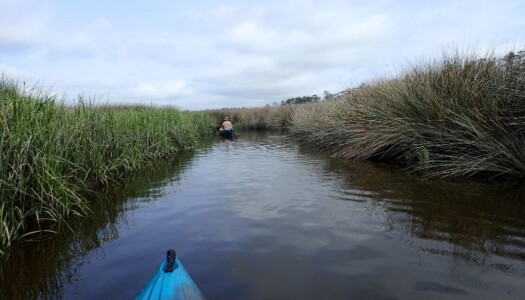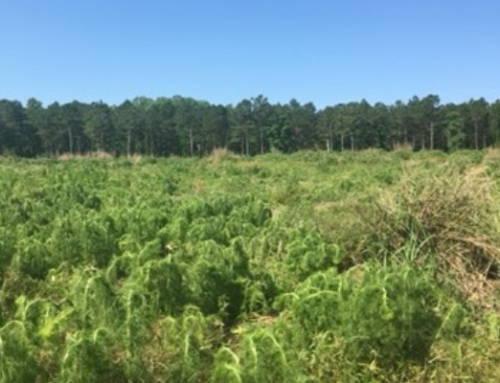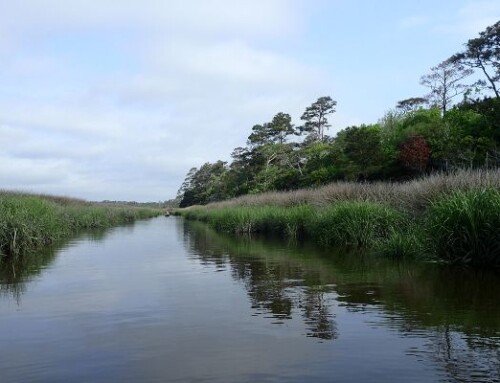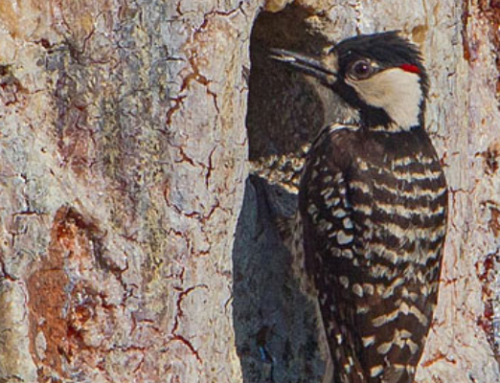The Coastal Land Trust proudly announces the initiation of a multi-year conservation partnership aimed at conserving and restoring areas along the Newport River in Carteret County. In April, this partnership commenced with the fee title transfer of a significant 1,436-acre tract along the Newport River to the North Carolina Coastal Federation. Acquired from Weyerhaeuser Company in May of 2023, this tract lies along Mill Creek Road, adjacent to the Croatan National Forest near Oyster Point, and includes estuarine marsh, managed loblolly pine forest, and bottomland hardwoods across four miles of the Newport River and Little Creek Swamp. The land also features Coastal Fringe Evergreen Forest, a rare forest type akin to maritime forest found on North Carolina’s barrier islands but located on the mainland coast. Both the Newport River and Little Creek Swamp have been designated as High Quality and Shellfish Waters by the North Carolina Division of Water Quality.
Harrison Marks, Executive Director of the Coastal Land Trust, expresses pride in the partnership, saying “We excel at acquiring and conserving critical coastal habitats with diverse resource values, like the Newport River Phase I Tract. We purchased and transferred this property to the Federation, who are experts at restoring vital wetlands to enhance coastal wetland quality, reduce flooding, and improve oyster habitat.”
The Newport River is recognized as one of the most economically significant yet environmentally threatened oyster-growing estuaries in North Carolina, according to the updated 2021 N.C. Oyster Restoration and Protection Plan. Braxton Davis, Executive Director of the Coastal Federation, highlighted the collaborative efforts, “The Coastal Federation has secured the necessary funds to develop and implement a restoration plan that will help protect water quality and shellfish, and reduce flooding in the Newport River Estuary. We are enthusiastic about our enduring partnership with Coastal Land Trust to secure, conserve, and restore more lands along the Newport River and its tributaries.”
Additionally, the 1,436-acre Phase I Tract holds strategic military importance, lying within a military transit route between the U.S. Marine Corps Air Station New River and the Piney Island Bombing Target (BT-11), close to Helicopter Turf Routes in Carteret County, and within a flight holding pattern for the U.S. Marine Corps Air Station Cherry Point in Havelock. Carmen Lombardo, deputy assistant chief of staff for Government and External Relations, Marine Corps Installations East-Marine Corps Base Camp Lejeune commented, “We were pleased to provide Department of Defense funds toward this acquisition. Conservation of this property is not only important to military training but also contributes to coastal resiliency.”
Funding for this acquisition came from various sources including the N.C. Land and Water Fund, U.S. Fish and Wildlife Service’s North American Wetlands Conservation Act grant program, and Department of Defense’s Readiness and Environmental Integration Program. The Federation also contributed acquisition funds. A bridge loan from Green South Foundation enabled the Coastal Land Trust to expedite the purchase of the property. The N.C. Land and Water Fund has also allocated funds to the Coastal Federation for habitat restoration, which will involve ditch removal and the reintroduction of native vegetation.
This collaboration extends beyond Phase I with the Coastal Land Trust actively working with the Coastal Federation to pursue the acquisition of additional tracts containing thousands of acres along the Newport River to further their conservation goals.
About the North Carolina Coastal Federation
The North Carolina Coastal Federation is a nonprofit membership organization that has worked since 1982 to keep the coast of North Carolina a great place to live, work, and play. Through a variety of programs and partnerships, the Federation works with people from all walks of life for clean coastal waters, thriving salt marshes and oysters, and a coast that is free of marine debris. To learn more, please visit www.nccoast.org.
Photo credit: Scott Pohlman of the Natural Heritage Program of NC









